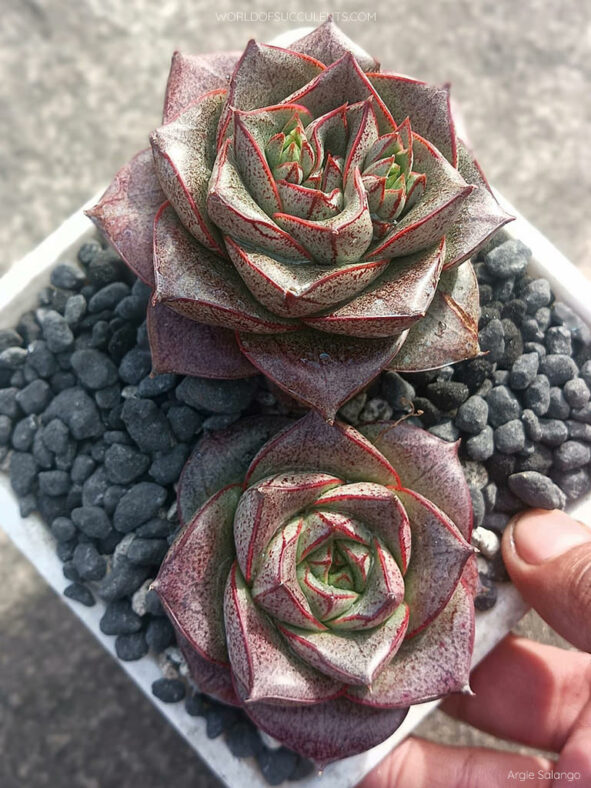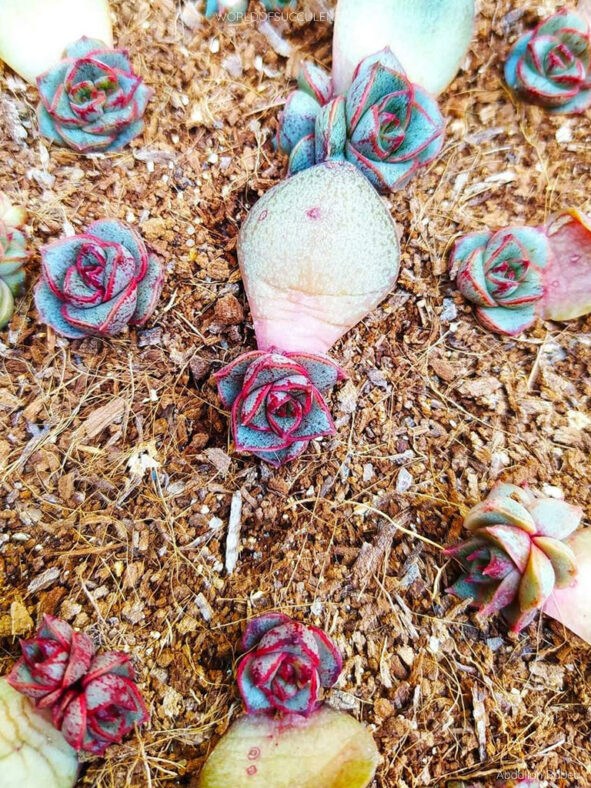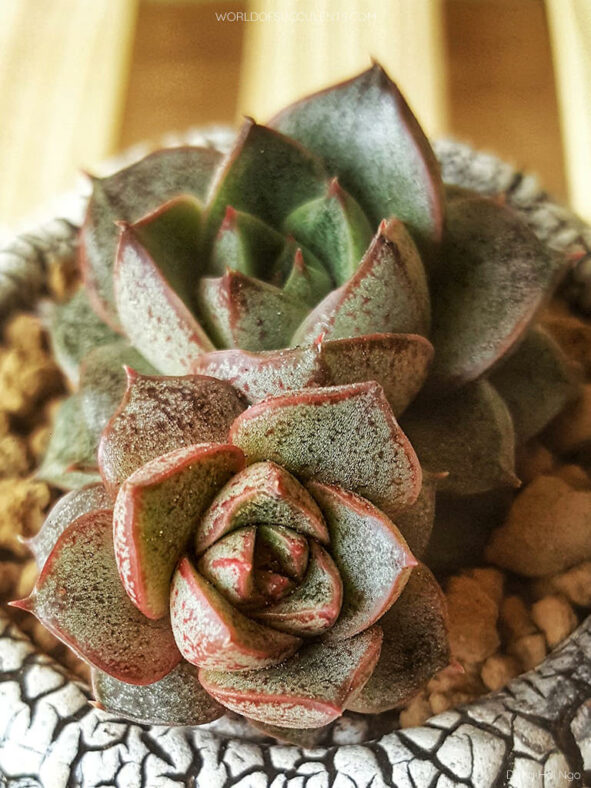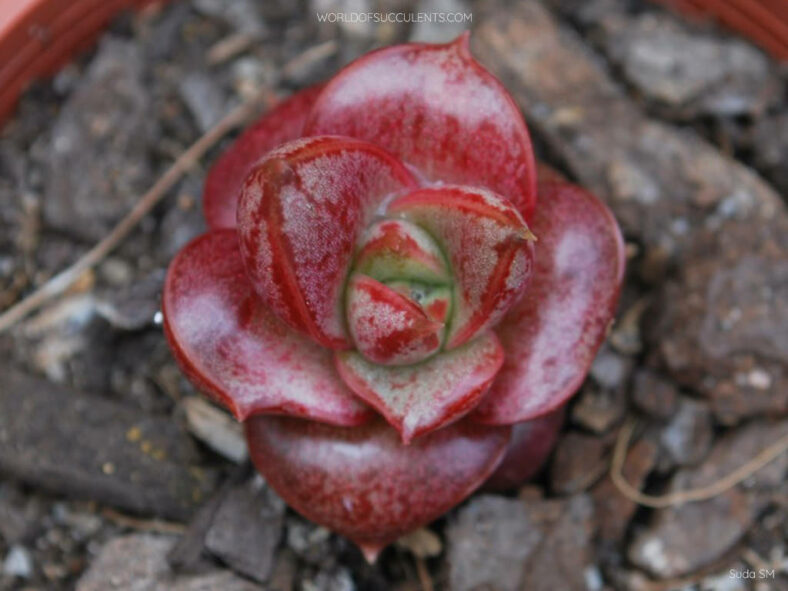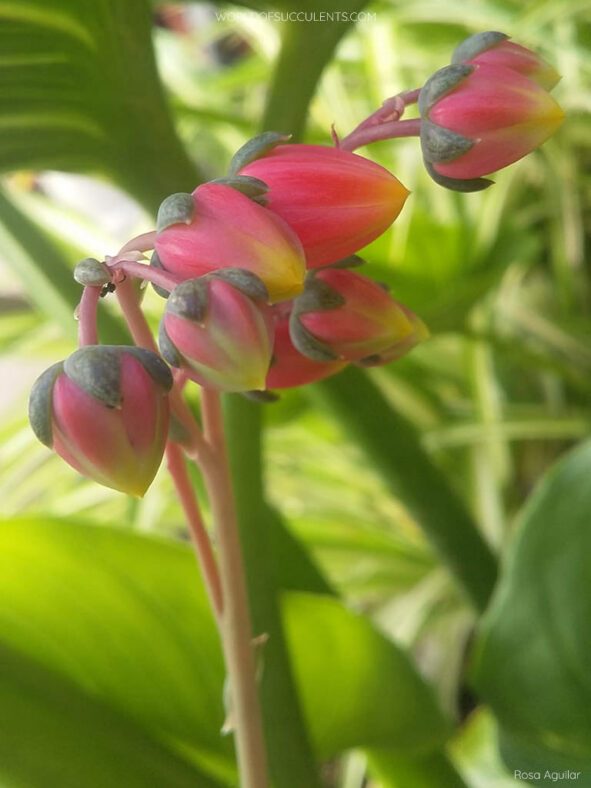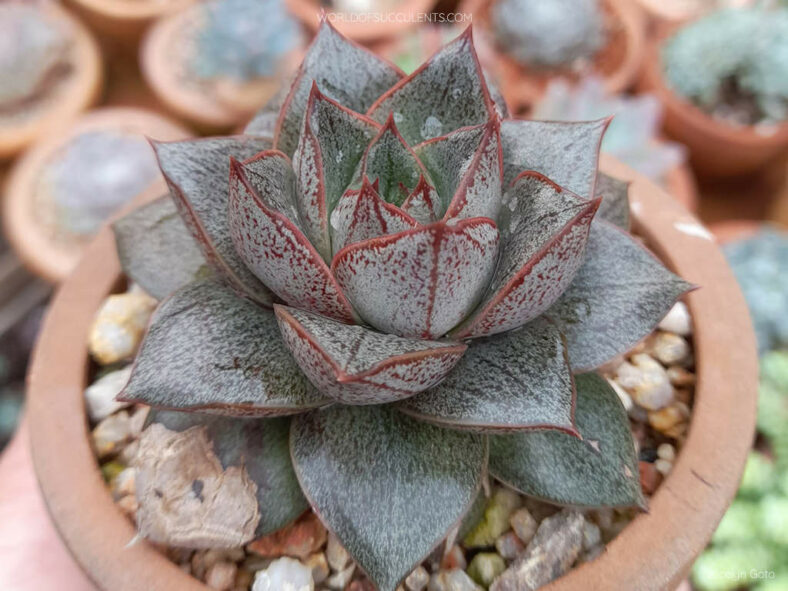The plants sold as Echeveria purpusorum are often actually Echeveria 'Dionysos'. These two plants are similar but can be distinguished by the shape of their leaves. Echeveria 'Dionysos' has plumper leaves, while Echeveria purpusorum has more slender leaves with a pointier apex.
Scientific Name
Echeveria 'Dionysos'
Synonym(s)
Echeveria 'Bacchus'
Scientific Classification
Family: Crassulaceae
Subfamily: Sempervivoideae
Tribe: Sedeae
Genus: Echeveria
Origin
Echeveria 'Dionysos' is a hybrid that results from a cross between Echeveria purpusorum and an unknown Echeveria. It was named by Jean-Michel Moullec.
Description
Echeveria 'Dionysos' is a small, slow-growing succulent that forms compact rosettes of deep olive-green, grey-green, or whitish-green leaves, adorned with irregular reddish-brown spots and borders. The rosettes can reach up to 4 inches (10 cm) in diameter and may produce a few offsets as they age. The plump leaves can grow up to 2 inches (5 cm) long and 1 inch (2,5 cm) wide, tapering to a small, slender point.
During spring, bell-shaped flowers appear on branched stalks that can reach up to 1 foot (30 cm) in height. The flowers are pinkish-red with pale yellow tips and have a yellow interior.
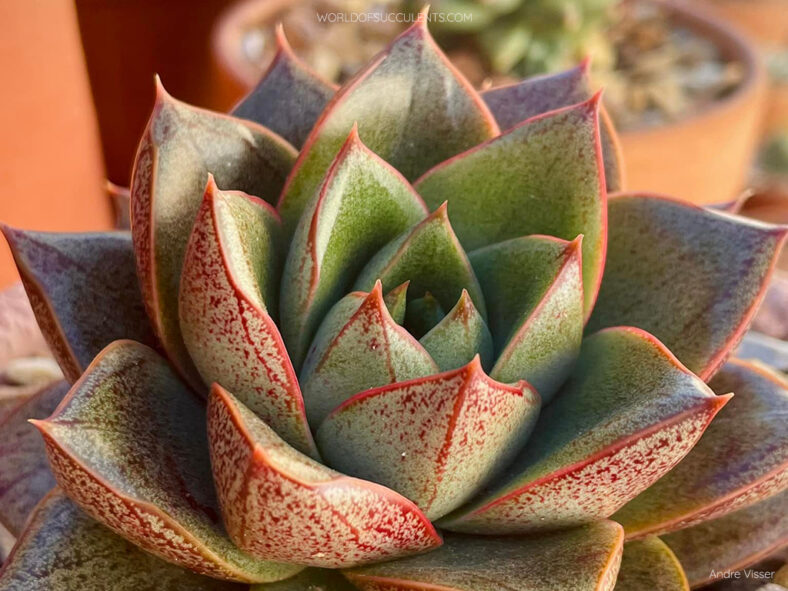
How to Grow and Care for Echeveria 'Dionysos'
Light: Echeveria 'Dionysos' grows best in full sun to partial shade for optimal growth. Therefore, place it near the brightest window in your home. If you move the plant outside in the spring, gradually acclimate it to less intense afternoon sun.
Soil: It's essential to have soil that drains quickly for growing healthy succulents. While many growers prefer to create their own soil mix, commercial soil will work fine.
Temperature: High temperatures are not a problem as long as there is plenty of fresh air. However, Echeveria 'Dionysos' is a tender succulent that must be brought indoors if there is a risk of freezing temperatures. It grows best in USDA Plant Hardiness Zones 10a to 11b, with average minimum winter temperatures ranging from 30°F to 50°F (- 1.1°C to 10°C).
Watering: During the growing season, the "soak and dry" method is the preferred schedule for this plant. Water deeply and then let the soil dry out completely before watering again. Water sparingly during the winter, only enough to keep the plant from shriveling. Above all, if you have a saucer under the pot, do not forget to empty the excess water.
Fertilizing: Although it can grow well without fertilizer, the plant may benefit from extra nutrients. Feed only during the growing season and use a water-soluble fertilizer diluted to half-strength.
Repotting: If growing in a container, repot as needed in spring or early summer. Ensure the soil is dry before starting. Also, always use a container with drainage holes.
Propagation: Echeveria 'Dionysos' is easily propagated by leaves or offsets. Therefore, spring is the best time to take leaf cuttings or separate offsets.
Learn more at How to Grow and Care for Echeveria.
Toxicity of Echeveria 'Dionysos'
Echeveria 'Dionysos' has no reported toxic effects. However, although this plant is safe for growing around children and pets, it is not advisable to eat it.
Links
- Back to genus Echeveria
- Succupedia: Browse succulents by Scientific Name, Common Name, Genus, Family, USDA Hardiness Zone, Origin, or cacti by Genus
Photo Gallery
Click on a photo to see a larger version.
